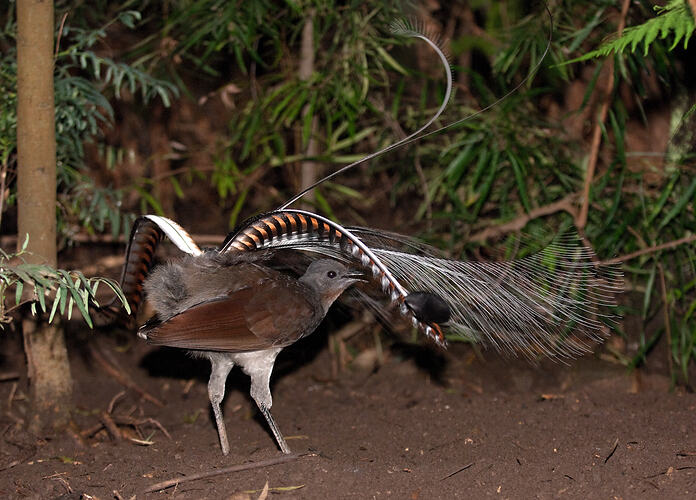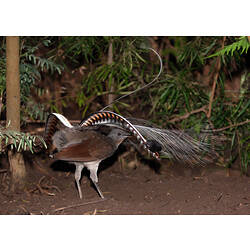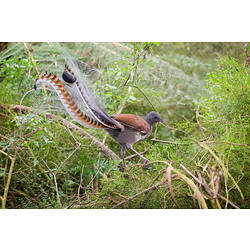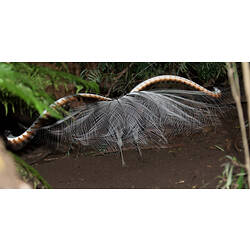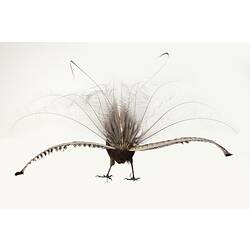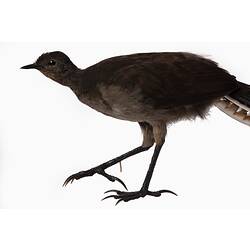General Description
The Superb Lyrebird is dark grey with coppery brown wings, back and throat. The feet, legs and bill are black. Males have a long tail with grey-white feathers and two wide, S-shaped decorative feathers used in courtship displays. Females and young males have long, brown feathers, but no decorative feathers. The bill to tail length is up to 1 m in males and 60 cm in females.
Biology
Superb Lyrebirds are excellent mimickers, with 80 percent of their songs consisting of mimicked sounds including other birds, dogs barking and some human-made sounds. Male Superb Lyrebirds invert their tail feathers over their head forming a lyre shape and mimic other birds' calls during courtship dances. These displays take place on low mounds of leaf litter that the male creates around his territory. Males and females defend separate breeding territories. Females lay a single egg in a dome-shaped nest camouflaged with moss and ferns. The chick will stay with its mother for around nine months. Males take six to eight years to develop a full adult tail. Lyrebirds forage by raking the leaf litter to find worms, spiders and insects and sometimes seeds. At night, they roost in trees. Lyrebirds tend to be sedentary, staying within a 10 km radius. They were introduced to Tasmania in the 1930s.
Distribution
South-eastern mainland Australia and Tasmania.
Habitat
Wet woodlands, rainforests and eucalypt forests in mountain and hilly areas.
More Information
-
Animal Type
-
Animal SubType
-
Brief Id
A large, ground-dwelling grey bird with an elaborate, ornate tail. Often heard mimicking sounds within its environment.
-
Colours
Brown, White
-
Maximum Size
1 m
-
Habitats
-
Diet
Carnivore
-
Diet Categories
Insects, Invertebrates
-
Endemicity
-
Conservation Statuses
CITES: Not listed, FFG Threatened List: Not listed, EPBC Act 1999: Not listed, IUCN Red List: Least Concern
-
Taxon Name
-
Common Name
Superb Lyrebird
-
Kingdom
-
Phylum
-
Subphylum
-
Class
-
Order
-
Family
-
Genus
-
Species Name
novaehollandiae
